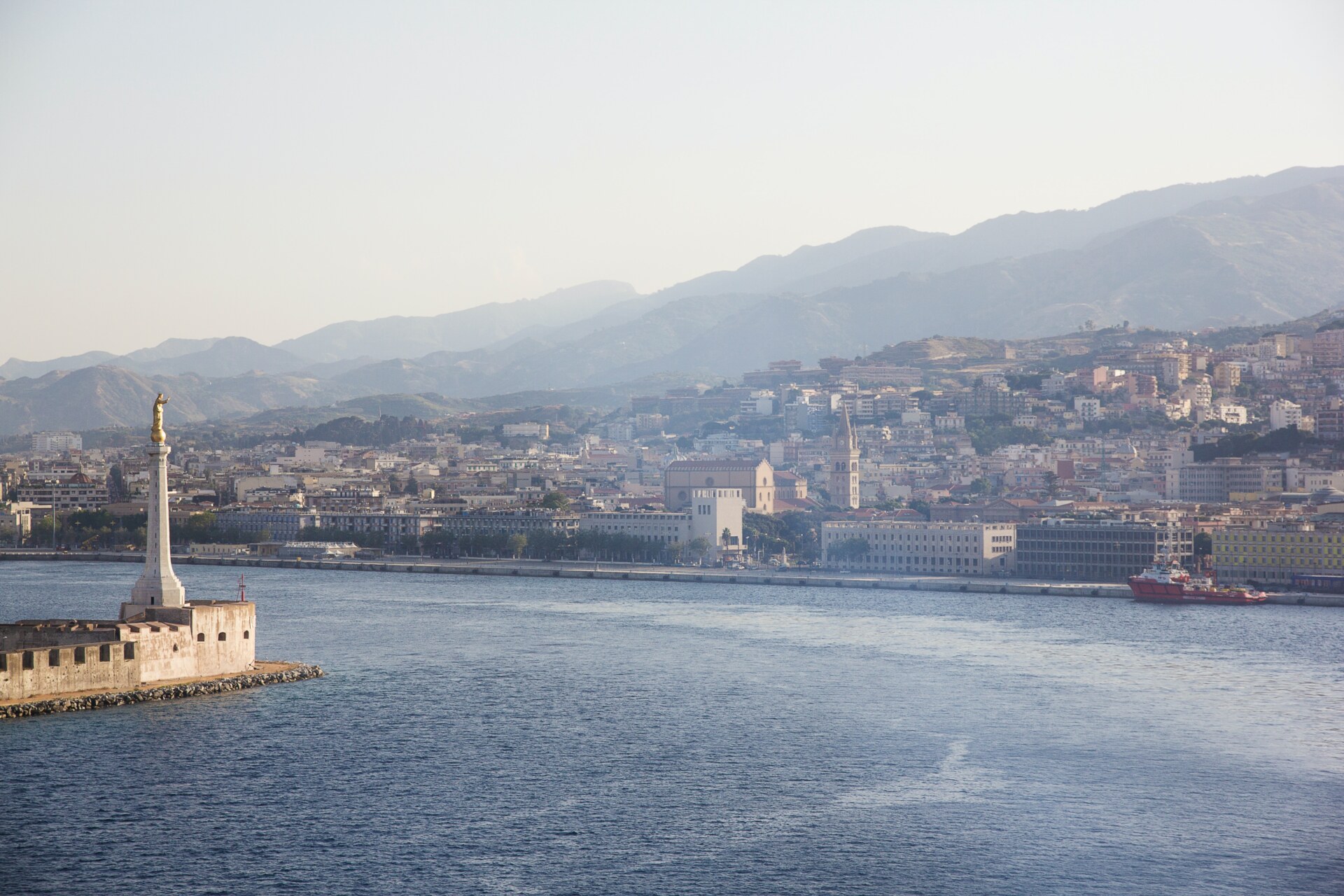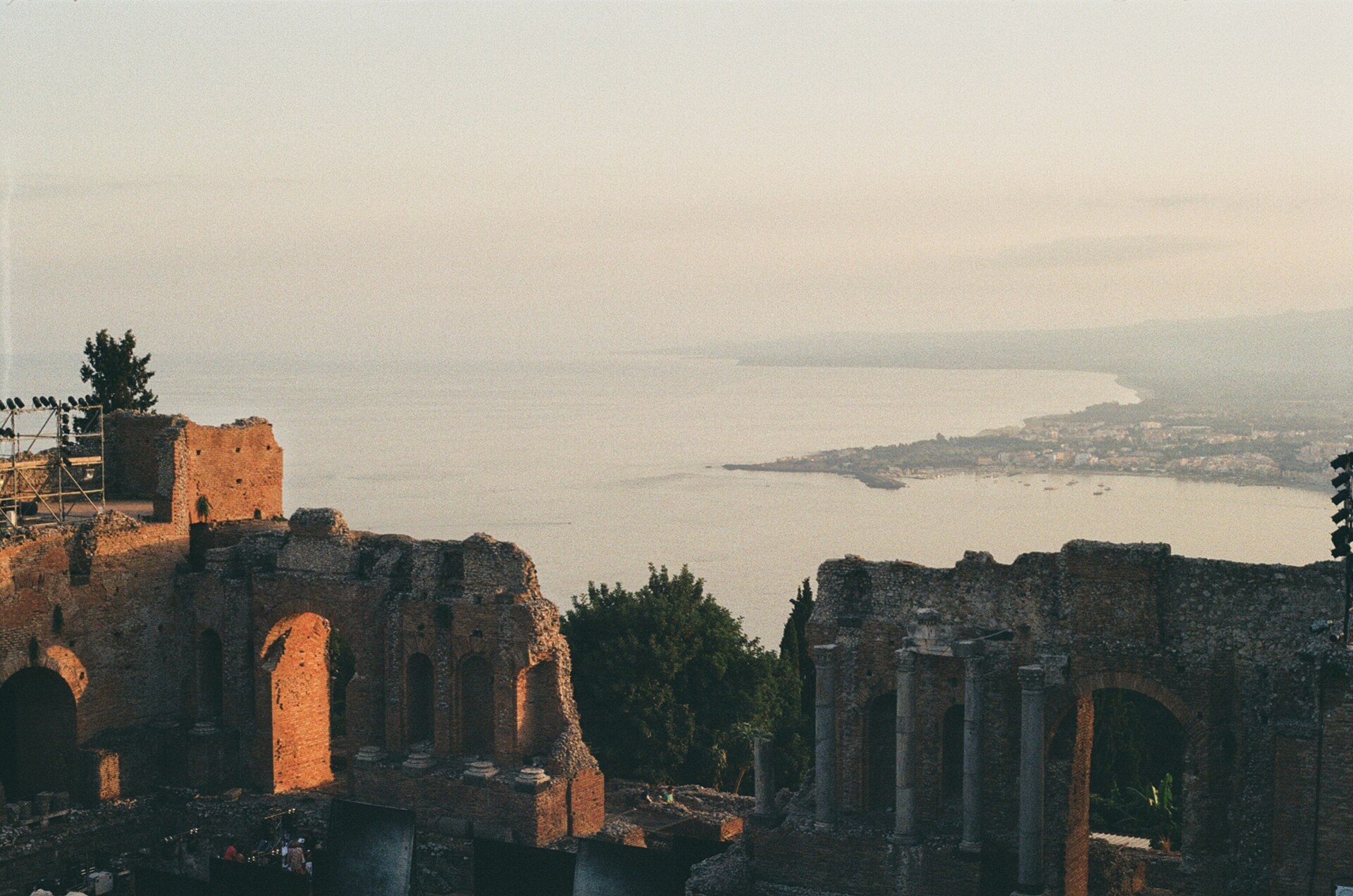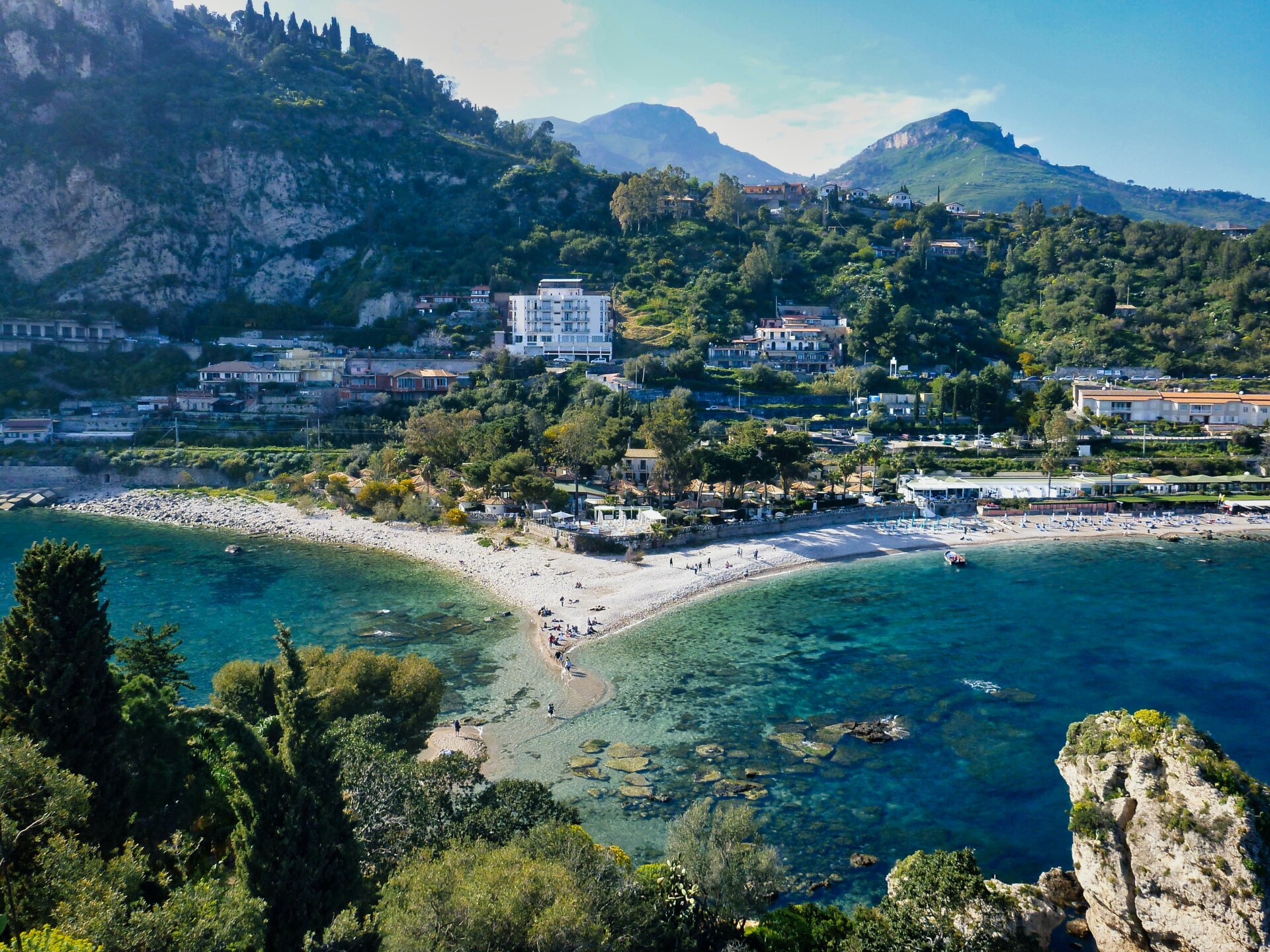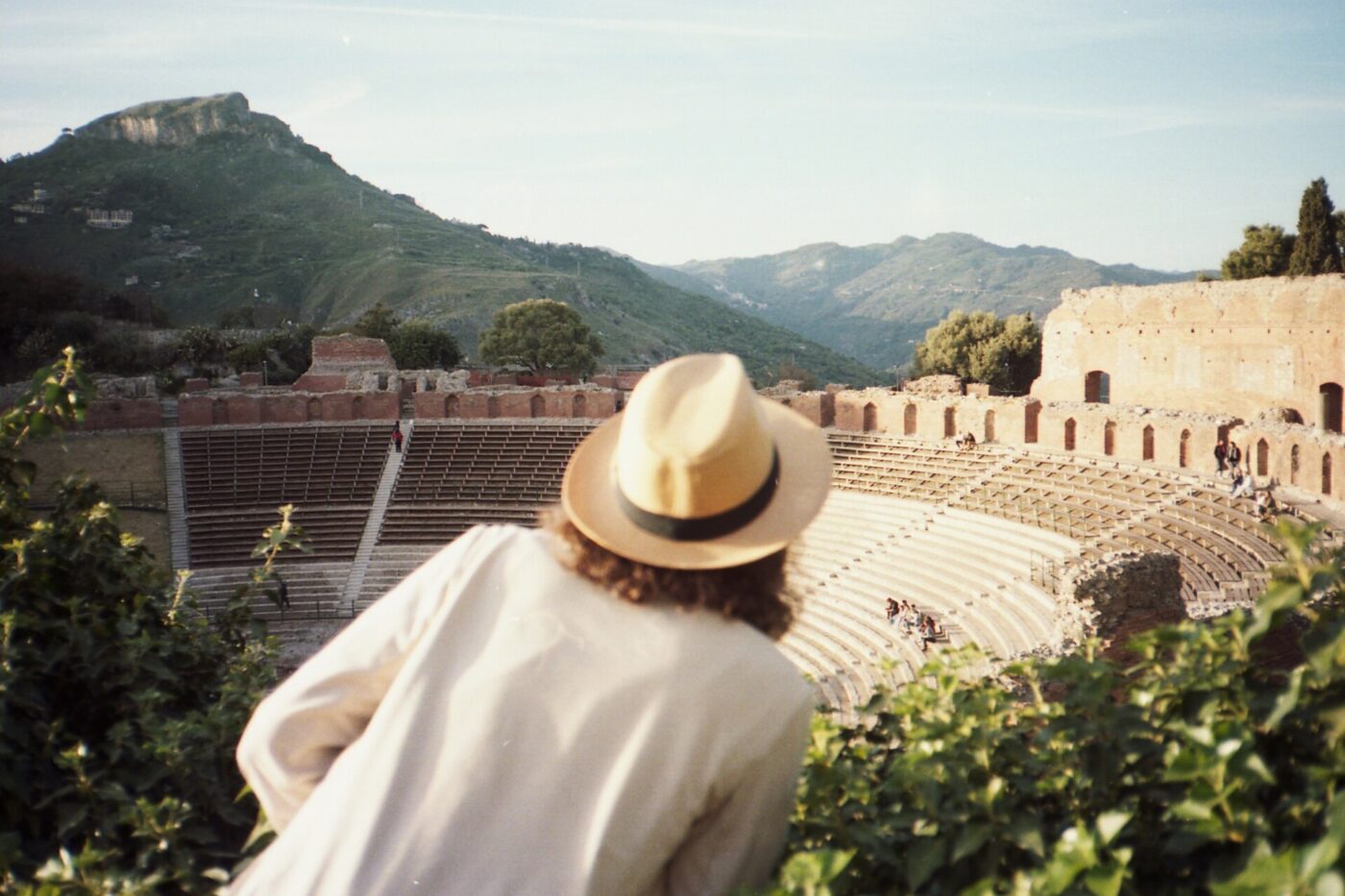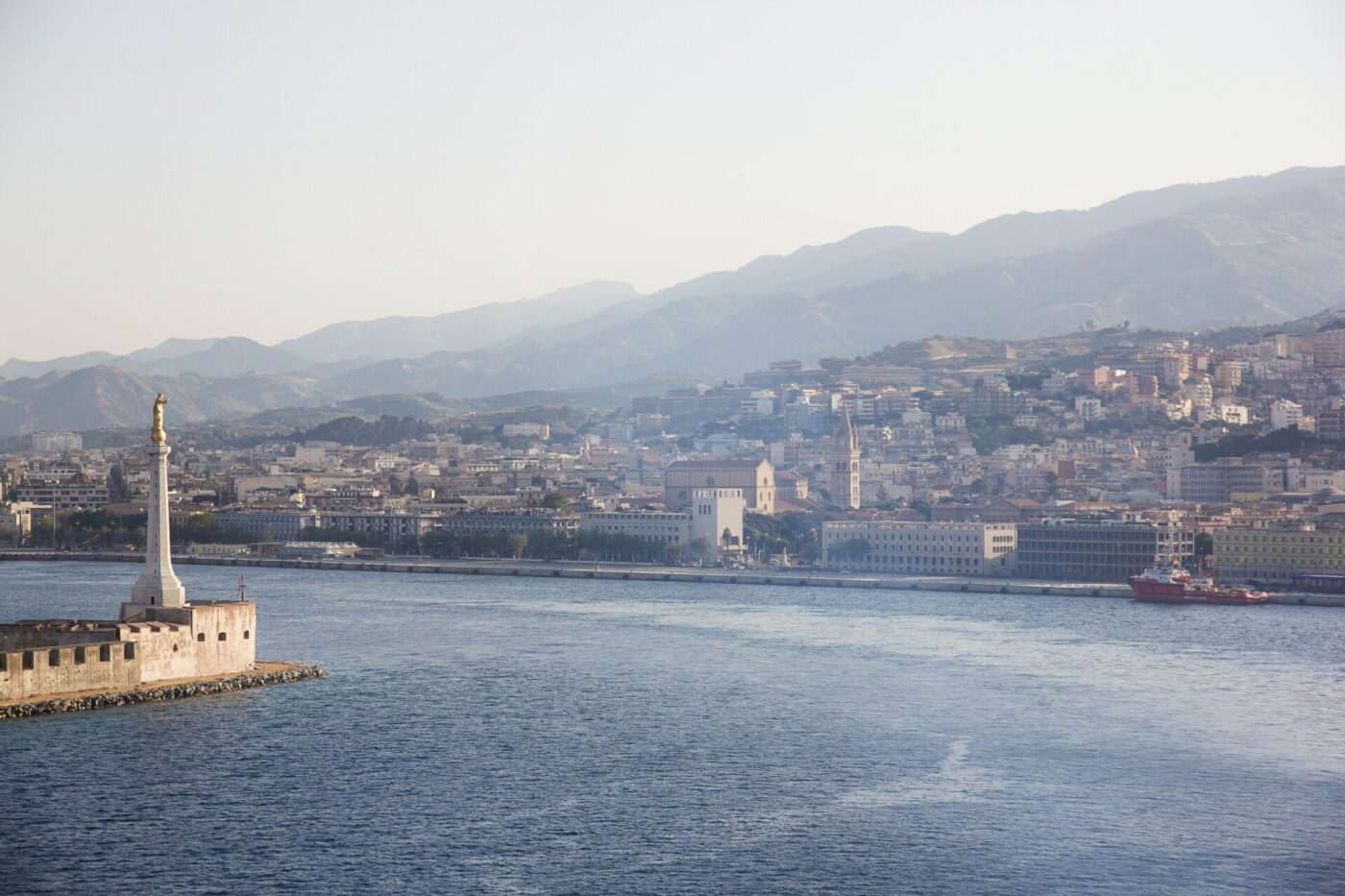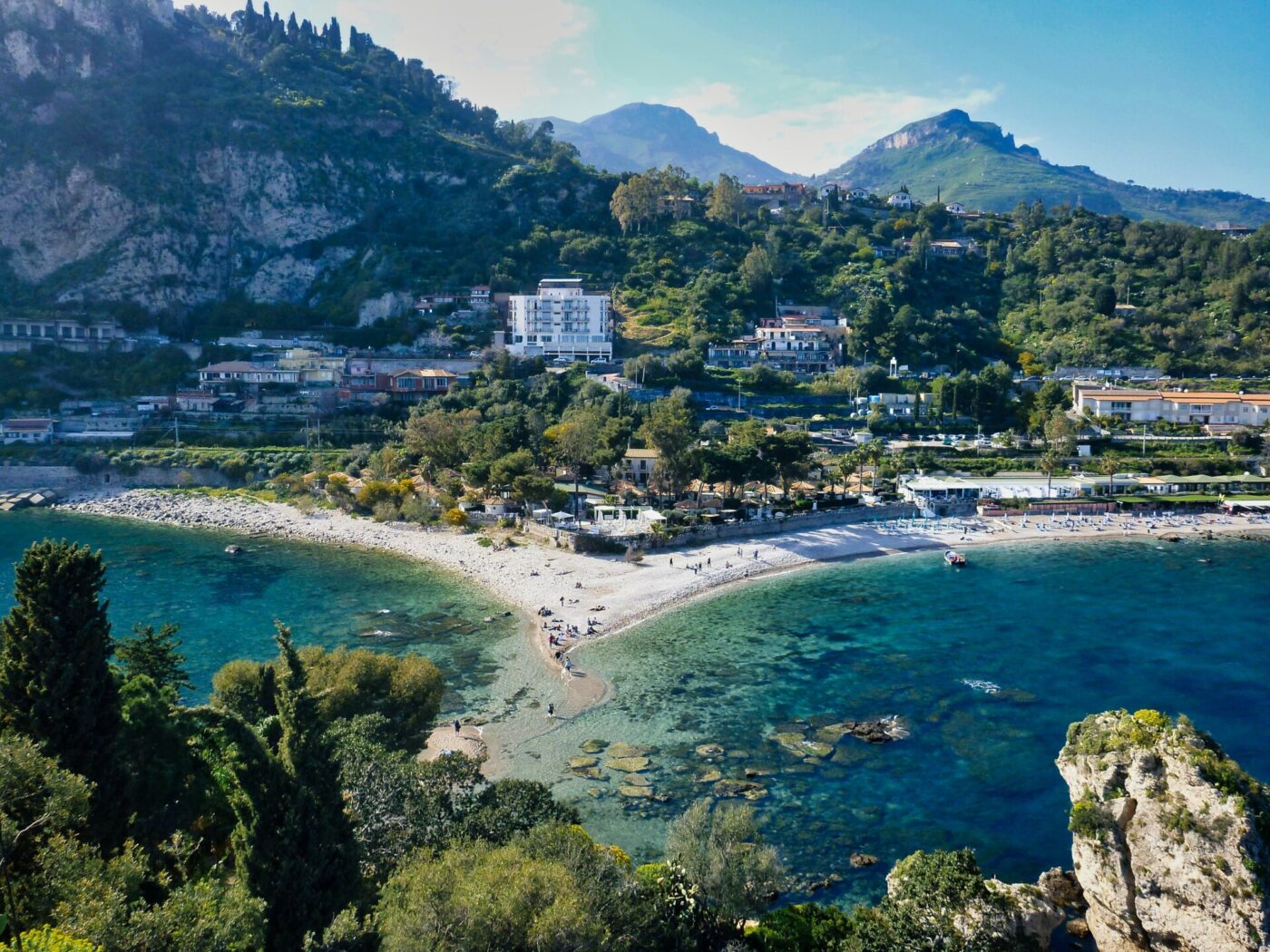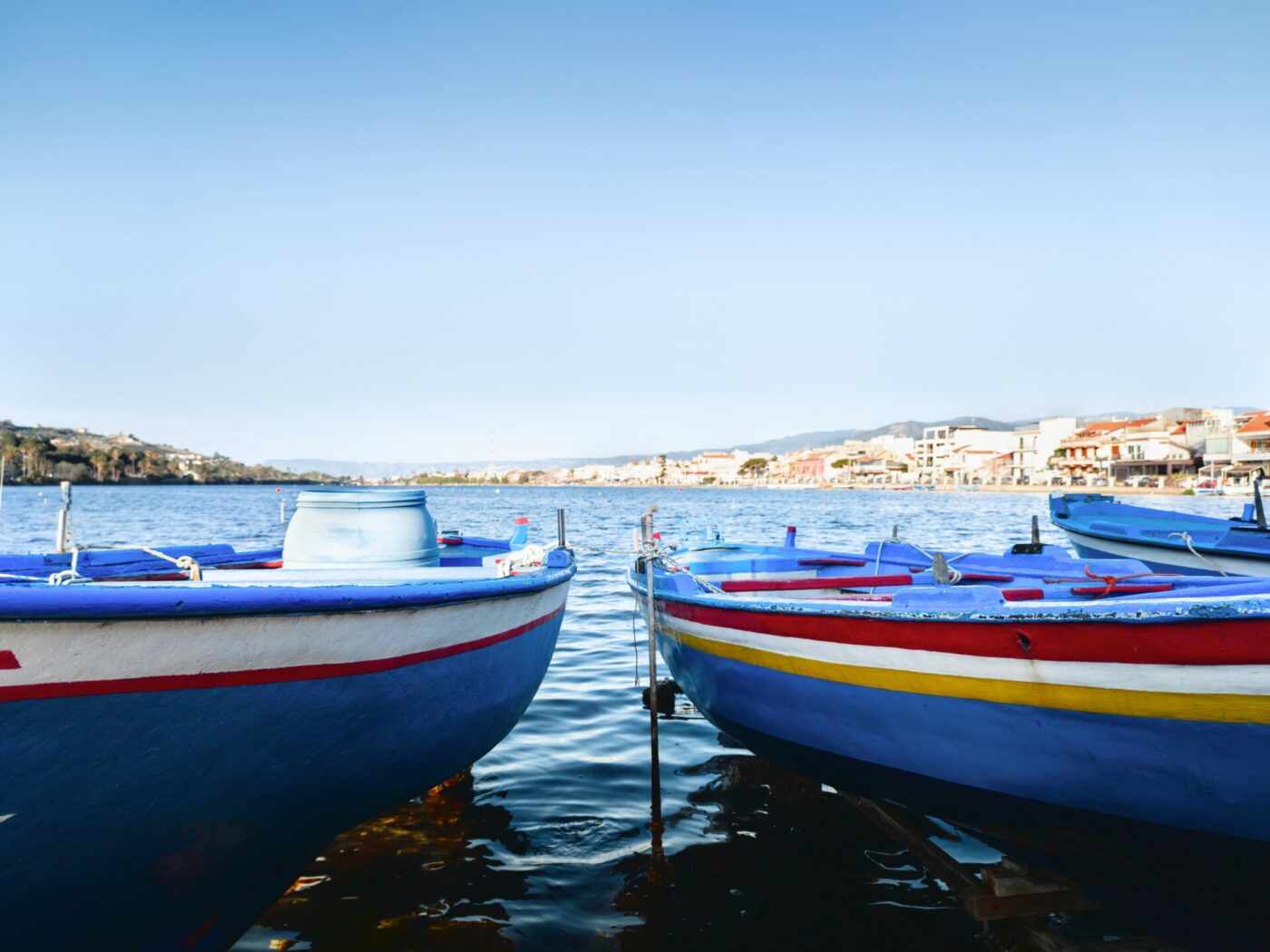I have an admitted bias towards my hometown of Messina, and though I have since left it, I still feel like its champion out in the world. Often overlooked for other, grander Sicilian cities like Palermo or Syracusa, Messina barely registers on travelers’ radars. Any friend who has been to Messina in the past typically tells me that they were only passing through to take the ferry and then rejoin the rest of Italy, as if my Messina was a ghost town. There is a tendency to prefer to claim being Sicilian (any interlocutor lights up at this discovery), rather than coming from Messina, in order to avoid this subtle humiliation. And even among Sicilians, Messina is known as la provincia babba, “the stupid province” from which there is not much to expect. Among the people from Messina themselves, a slightly less marked sense of belonging should probably be recognized compared to other Sicilian provinces.
My idea is that the devastating earthquake of 1908 not only destroyed certain artistic beauties, but strongly undermined the identity of the city. From 1908 on, Messina has not been able to recognize itself anymore: it became a phantom entity, mindful of what it had been, but condemned to be a place with an evanescent identity. As everywhere in Sicily, there are always too many ambiguities and contradictions in this land, but Messina will always remain my city and my province–and I love it for its indispensable imperfections.
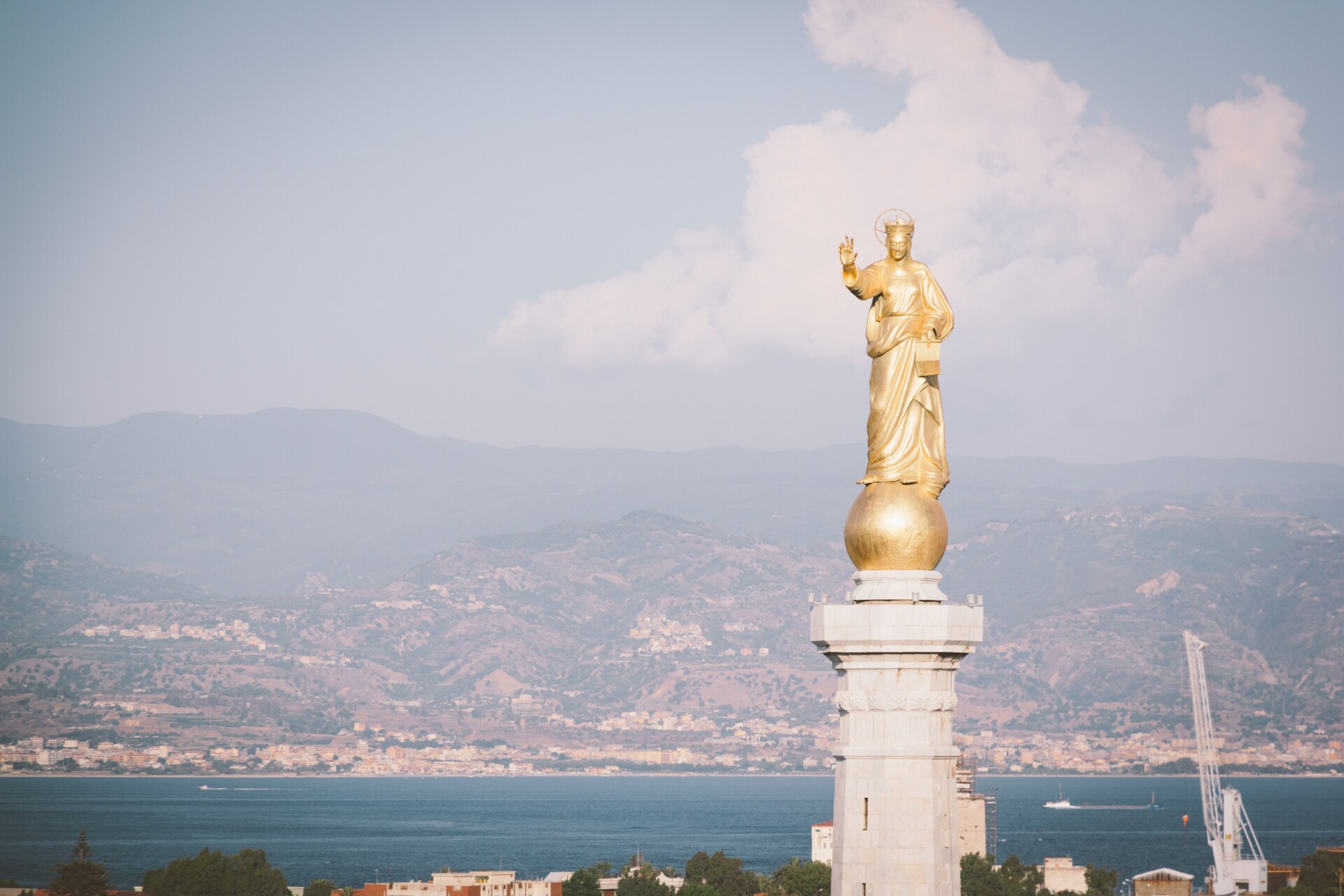
The Bell Tower of the Duomo at Noon
When I was in high school, I remember that, around 12:08, every lesson was enlivened by the arrival of Schubert’s Ave Maria from the nearby Cathedral of Messina. Not many people know that the bell tower of the Messina Cathedral contains the largest and most complex mechanical and astronomical clock in the world. It is not a matter of megalomania, but I assure you that any person from Messina who observes the clock in the main square of Prague has a good laugh when comparing it to the majesty of our own. Rebuilt after the earthquake and based on the previous model, it was commissioned to the Ungerer, a company from Strasbourg, in 1933. Still today, Messina residents and tourists gather in Piazza Duomo at noon every day to observe the complex system of levers that activate the bronze statues on the facade. The show begins from above with the lion roaring and waving the Messina flag, and then proceeds progressively downwards with the rooster crowing, Dina and Clarenza (two figures from local lore) ringing the bells and the church of Montalto, which rises from below, on the heights of Messina. Thanks to the ever-present wind, Schubert’s Ave Maria punctually echoes out to divert all minds from their routine for a fleeting and cathartic reference to beauty.
The Sea at “La Punta”
Summer in Messina means one thing to me: the bath at “la punta” (tip). So called by locals as it is the north-eastern tip of Sicily, the Capo Peloro beach in Torre Faro offers a breathtaking view of the Strait of Messina and of Calabria. But what makes “la punta” truly special is the meeting point between the Ionian and Tyrrhenian seas which, crossing at that precise spot, generate a continuous flow of very strong currents. It can be very dangerous, and you can get carried away if not adequately prepared! In essence, you have to walk a few meters along the shoreline and then enter the water, only to be carried back to the starting point. You should take care not to go too far from the shore, so as not to risk not being able to go back.
Another absolute advantage of this beach is that you can choose what best suits your taste between the Ionian and the Tyrrhenian Sea: those who opt for the former prefer ice-cold, invigorating, and clear water with the possible presence of jellyfish, while those who opt for the latter can stay longer in warmer water without jellyfish, but it is possibly more turbid. This beach is also identified by locals as “Pilone” due to the presence of a red and white pylon 224 meters high. An example of industrial architecture, the “Pilone”, now in disuse, was used for electricity during the second half of the 20th century.
Early Summer in the Aeolian Islands
My Eden in Sicily, however, are the Aeolian Islands in early summer. The islands are in Messina province and just a short ferry trip away from the city. For me, the Aeolian Islands represent an oasis of peace in the frenetic pace of an Italian summer. Only once have I tried the mini cruise, which in one day allows tourists to visit several islands, but I fear it greatly detracts from the beauty of experiencing them slowly. A few years ago, my father and I started a tradition of giving ourselves an early summer weekend on a single island. These moments were of such an abstraction from reality, that it was hard for me to believe that I was so close to my city. Far from the noise and the chaos, in Stromboli I listened to the sea directly from my bed; in Panarea, I was greeted by the few other bathers like we were old friends; and in Salina, I watched the sunset from the fraction of Pollara, the notes of Bacalov from Il postino playing in my head. For me, the Aeolian Islands are moments, glimpses of the eternal snatched from the banality of the present. And, especially in the early summer, they are magic.
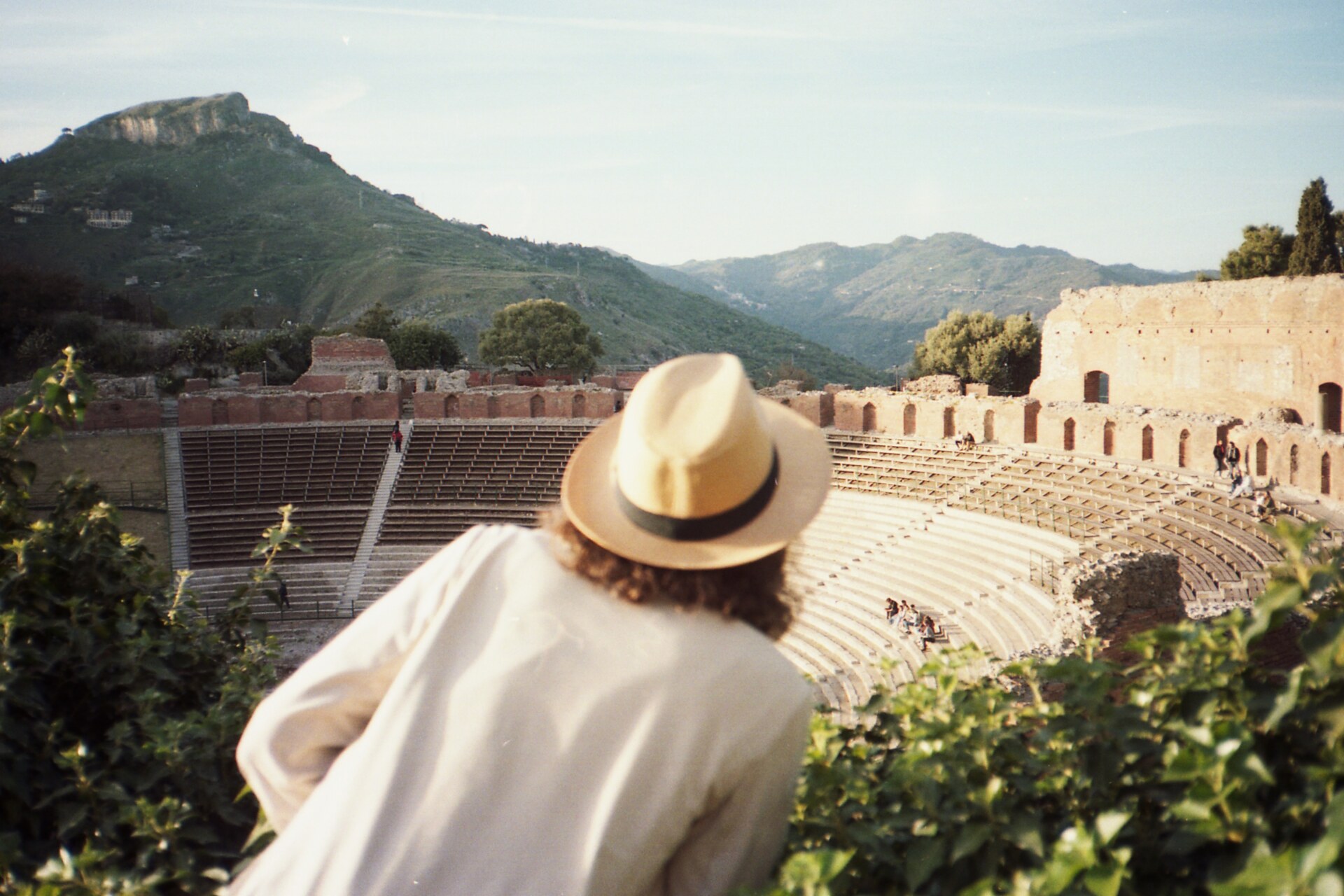
Concerts in Taormina
If I go back in my mind to summers in Sicily, there is another constant note: my parents taking me to the Greek Theater in Taormina to see a concert. I must admit we have often experienced these musical interludes as an excuse to go to Taormina in the early afternoon and enjoy a nice walk along Corso Umberto and eat a necessary pre-concert granita at Bam Bar. We often bought tickets for the higher, unnumbered seats, the ones that force you to enter the theater when the gates open, in order to grab the best view. Entering that theater has always held something magical for me: at first because you cannot imagine from the outside how majestic it is and, secondly, because you can observe a splendid stretch of the Ionian coast in the distance. Moreover, entering well in advance has always allowed us to observe the evening lights descend on us and appreciate the chromatic variations of that breathtaking panorama. They generally keep the scenography of the show minimalistic, with just stage lights, so that the view really takes center stage. The theater can also be visited during the day, but I would recommend a nice evening concert to fully enjoy its potential.
A Trip to Savoca, Set of The Godfather
During winter, it would be misleading to think Messina has nothing to offer. Especially during the Christmas and Easter holidays, I always love going towards higher altitudes like Savoca on the Ionian coast. After driving the perilous curves, refreshment in one of the local trattorias is soul-soothing. Even though the sea of Santa Teresa di Riva is not far away, restaurants here always offer a landfare menu, with pasta alla norma and grilled meat. This village is also the only one in Sicily where you can get granita al limone with the zuccarata, a typical biscuit with sesame seeds. Savoca has a different atmosphere than the stereotypical Sicily of sun and sea: you need to protect yourself from the cold, and you cannot give up a nice postprandial walk to stay warm (also to walk off the heaviness of the dishes). You can visit the mummies in the Capuchin Church, a source of interest for the Sicilian novelist Leonardo Sciascia, or you can take a walk that includes a passage in front of Bar Vitelli, well known for having been a set for Francis Ford Coppola’s The Godfather. The famous Italian-American director is honored by a statue in the main square, just in front of the bar.
In recent years, Kontiland, an artistic and cultural park that replicates the main Sicilian monuments in miniature, has popped up in a neighborhood of Savoca, set outside across about 10 square meters. Since its opening in 2017, the park continues to be enriched with new works, thanks to the efforts of Giuseppe Lo Conti, a former bricklayer with a great passion for Sicilian heritage.
An Adventure in the Gole Dell’Alcantara
When Matteo Garrone’s The Tale of Tales was released in cinemas, I remember being entranced by the scenes with John C. Reilly and found that they were filmed at the Alcantara Gorges, right here in Messina province. Via the icy waters of the Alcantara river, you can access these fascinating canyons made of prismatic, black lava rock walls up to 50 meters tall. You certainly must overcome the shock of the water temperature, but the experience of going inside the gorges is indescribable. There are lots of small internal waterfalls; be careful not to slip. While here, you can also stop at the botanical and geological park of the Gorges, which offers body rafting, hiking, and river trekking.

Messina’s Street Food
It may be trivial, but I cannot deny that the culinary delicacies are what make me miss Messina and its province the most. On evenings with friends when you don’t have the time to cook and don’t want to spend too much, you typically go to the rosticceria to buy focaccia and pidoni that are typical of Messina. The focaccia resembles a pizza, although it is taller and, in its traditional version, topped with tomato, tuma cheese, escarole, and anchovies. Pidoni, on the other hand, have more or less the same ingredients (apart from the tomato, not present in the traditional recipe), but are fried and resemble what are called panzerotti in other parts of Italy. Bear in mind that a true local will always call them pitoni, transforming the “d” into “t” in the pronunciation. Add an arancini, as in the rest of Sicily, but be careful that the name in Messina is strictly male (don’t even try to ask for an arancina because you probably won’t be served).
Among the desserts, next to cannoli and cassata, in Messina you can taste pignolata, a mound of small fried “biscuits” totally covered with a half-white and half-black icing. The white part is made of lemon-flavored sugar syrup, while the black part is made of chocolate sugar syrup–for lovers of extremely sweet foods only.
A dutiful mention goes to Don Minico‘s Pagnotta alla Disgraziata, celebrated as a National Traditional Product since 2003. Going up the Peloritani mountains, the locals meet in the Quattro Strade locality and replenish themselves with Don Minico’s legendary sandwich. Certainly not famous for its lightness, but tasty enough to make up for it, the Pagnotta is seasoned on the spot with pickled vegetables (eggplants, artichokes, dried tomatoes), semi-mature Peloritani cheese, and local cured meats like medium-grain salami. Everything is then accentuated with typical preserves such as bay leaf, wild fennel, garlic, oregano, capers, and the ever-present hot pepper that justifies the name assigned to the sandwich (disgraziato in Italian means wretched).
For seafood lovers, go to Ganzirri, where mussels and clams are fished from its two lakes. Capo d’ Orlando is another great place to taste fresh fish while gazing at the beach where Gino Paoli composed “Sapore di sale” with the Aeolian Islands on the horizon.
Messina may well be the provincia babba, but it is its humbleness that makes it so beautiful. Try to see it through my eyes, because it is so much more than just a crossing point.


